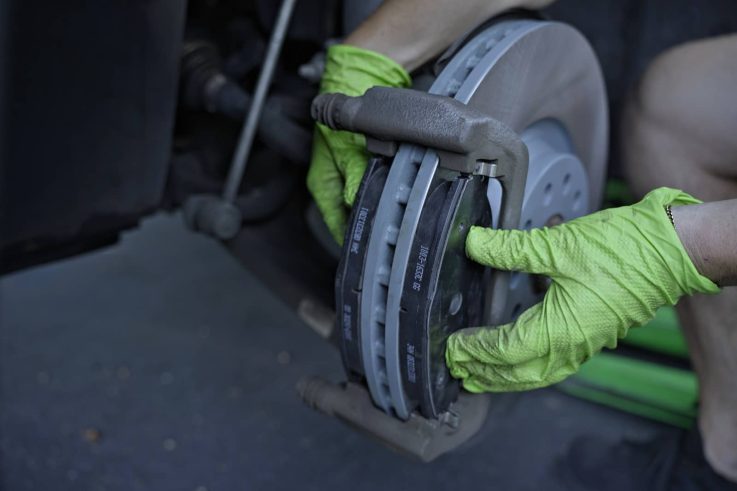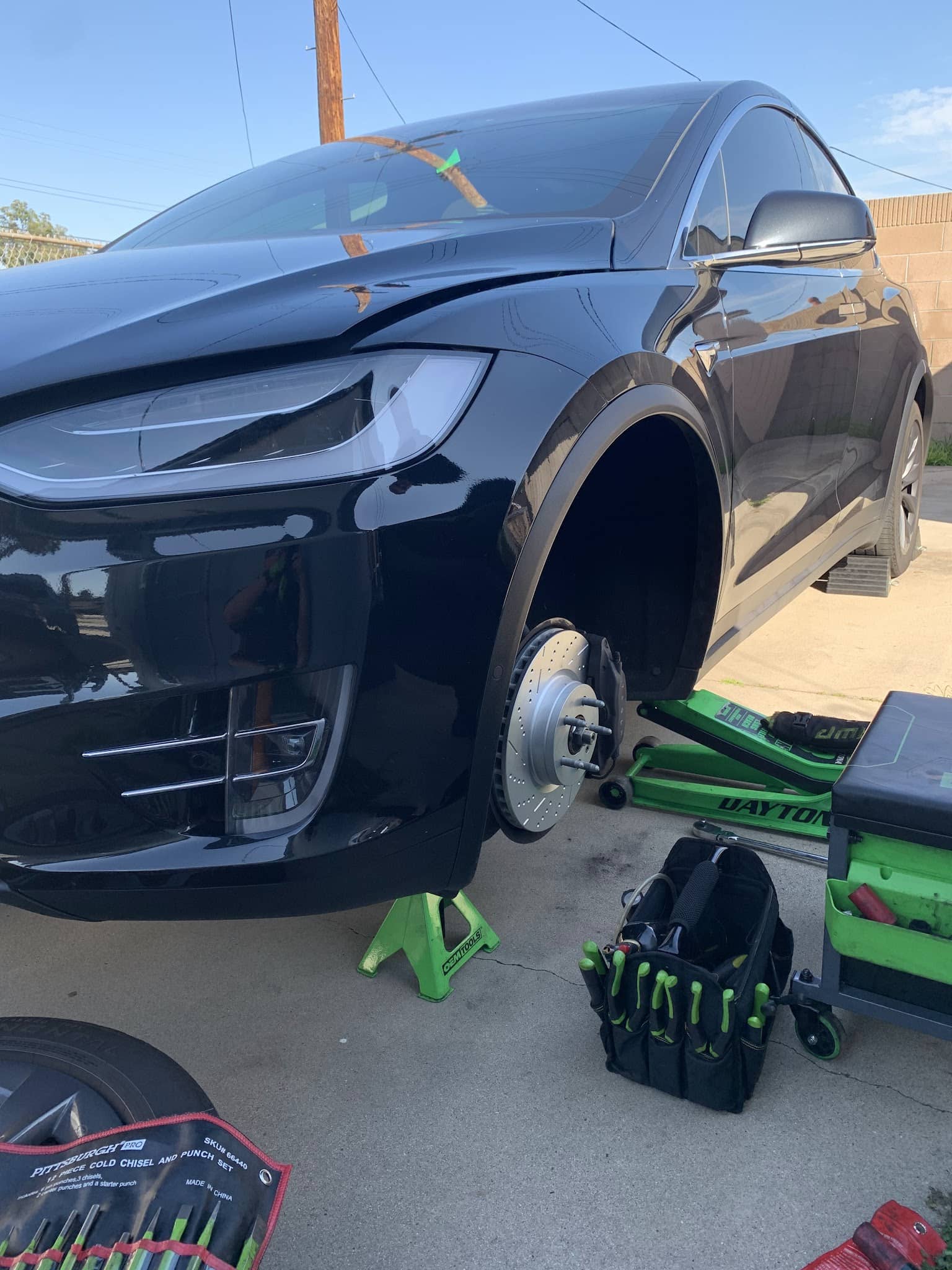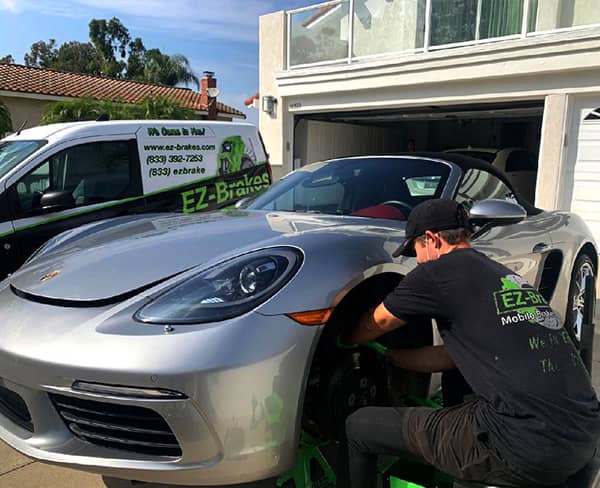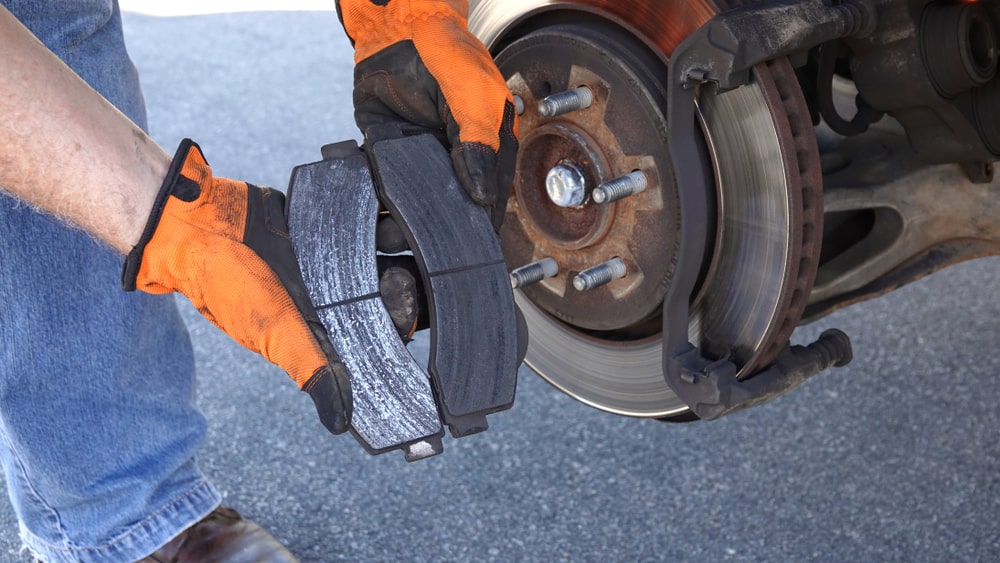When it comes to maintaining your vehicle’s braking system, one of the most important parts to consider is the brake pads. Brake pad replacement is a necessary service that helps ensure safe driving and smooth stopping power. However, many vehicle owners wonder whether they should replace all brake pads at once or just replace the ones that are worn out. In this blog post, we’ll explore this question in-depth and provide valuable insights for your next brake maintenance service at EZ-Brakes.
Understanding Brake Pad Replacement
Before diving into whether all brake pads should be replaced at once, it’s essential to understand why brake pads wear out and when they need to be replaced. Brake pads are critical components of your car’s braking system, helping to create the friction necessary to stop your vehicle. Over time, they naturally wear down due to constant pressure, heat, and friction. When brake pads become worn, they cause increased pressure on the brake caliper, which can affect the entire braking system. Without regular brake inspection, a damaged brake pad could lead to issues with other components, such as brake rotors, brake lines, and even the master cylinder.
What Happens During Brake Pad Replacement?
Brake pad replacement is a critical part of vehicle maintenance, ensuring that your car’s braking system continues to function at its best. Over time, the brake pads wear down due to constant friction and pressure, and replacing them is necessary to maintain safe stopping power. The brake pad replacement process is more than just swapping out old parts. Here’s an in-depth look at what happens during the replacement:
Inspection of Brake Components
The process begins with a thorough brake inspection of your car’s brake system. A certified technician will assess not only the brake pads but also the brake rotors, caliper assembly, brake lines, and other components involved in the braking system. The technician checks for any signs of damage or excessive wear on the pads, and inspects the rotors for scoring, warping, or uneven wear. If any issues are found, such as a leak in the brake lines or a damaged brake caliper, the technician will recommend further repairs. If there’s excessive metal wear indicators on the brake pads, or if the brake rotors are damaged, it may require additional attention.
Pad Removal
Once the inspection is complete and the technician confirms the need for brake pad replacement, the next step is the removal of the old, worn-out pads. The technician will carefully remove the caliper assembly and then slide out the old brake pads from the caliper bracket. If you’re dealing with drum brakes, the technician will also inspect the brake drum. This step must be done with precision to avoid damaging other brake components like the brake pedal or piston. If the brake pads are extremely worn, there may be debris or brake dust that needs to be cleaned away before the new pads can be installed.
Rotor Inspection and Resurfacing
While the pads are being replaced, the technician will also inspect the brake rotors for signs of damage. If the rotors have been affected by the wear of the old brake pads—such as grooves, scoring, or warping—they may need to be resurfaced or replaced entirely. Resurfacing involves smoothing out the rotor’s surface to remove any imperfections, allowing for better contact with the newly installed brake pads. If the rotors are too damaged, they will need to be replaced to ensure the braking system functions safely and efficiently.
Installation of New Brake Pads
After the inspection and rotor check, the technician will install the newly installed brake pads into the caliper bracket. The new pads are placed precisely to ensure even wear, optimal performance, and smooth braking. Once the pads are installed, the technician will reassemble the caliper assembly, making sure that the system is properly re-secured. The technician will also check the brake fluid levels and ensure that everything is working smoothly. Once all is reassembled, the brake pedal will be tested to ensure proper pedal feel and responsiveness.
Finally, the technician will test the brakes to ensure that the new pads are functioning correctly and that the braking system is responsive and safe. After this final inspection, your vehicle will be ready to hit the road with fresh, reliable brake pads that will help ensure your safety.
Signs It’s Time for Brake Pad Replacement
Before scheduling brake pad replacement, it’s important to look for signs of wear:
• Squeaking or Squealing Noises: These sounds are often caused by the metal wear indicators on the brake pads, signaling that the pads need attention.
• Grinding Sound: This occurs when the brake pad material is completely worn down, and metal-to-metal contact begins.
• Vibration When Braking: If your steering wheel or brake pedal vibrates when braking, your brake pads may be unevenly worn, or the brake rotors may need resurfacing.
• Reduced Braking Performance: If your vehicle feels less responsive or takes longer to stop, it’s time for an inspection, especially if your brake light is on.
Read more: 5 Signs It’s Time for a Brake Pad Replacement
Should All Brake Pads Be Replaced At Once?
Now that you understand the basics of brake pad replacement, let’s dive deeper into whether you should replace all brake pads at once or just the ones that are worn out.
1. Reasons to Replace All Brake Pads Simultaneously
• Consistency in Braking Performance
If you replace only the worn-out brake pads, the new ones may be thicker than the older pads, which can create inconsistent braking performance. By replacing all the pads at once, you ensure uniform braking, which contributes to better overall safety and performance. Uneven braking could affect your brake pedal feel and cause unnecessary strain on the brake lines.
• Preventing Further Damage
When brake pads wear down unevenly, it can cause extra stress on other braking components, such as the brake rotors. If the pads are too thin, they can damage the rotors, which could result in costly repairs. Replacing all the pads together helps avoid this problem and ensures that your brake caliper is working as it should.
• Save Time and Money
Although replacing all brake pads at once might seem like a larger upfront expense, it may actually save you money in the long run. Replacing all four pads at the same time reduces the number of visits to your mechanic and the potential for additional issues later, such as problems with the brake pedal or master cylinder.
2. When It’s Okay to Replace Only Some Brake Pads
While it is generally recommended to replace all brake pads at once for optimal performance and safety, there are specific situations where replacing only one or two brake pads may be sufficient. However, these cases are typically the exception rather than the rule.
• If One Pad Is Damaged
In some instances, only one brake pad may become damaged due to external factors. For example, road debris, stones, or other foreign objects can sometimes get lodged in the brake system, causing uneven wear or physical damage to a single pad. In such cases, if the rest of the pads are in good condition, it might make sense to replace only the damaged pad rather than the entire set. However, it’s crucial to have your technician thoroughly inspect the entire braking system to ensure no other issues are present, including the brake lines and brake caliper.
• If The Other Pads Are Still Thick
Another scenario where partial brake pad replacement might be appropriate is when one or two of the pads have worn down significantly, but the others still have significant thickness and are functioning properly. If the remaining pads are in good shape, replacing only the worn-out ones might be an acceptable solution to extend the life of your braking system. However, it’s important to note that brake pads wear unevenly over time. Even if the other pads look fine now, they will likely need replacement soon. It’s generally recommended to replace all of them at once when the time comes.
Frequently Asked Questions (FAQ)
HOW OFTEN SHOULD I REPLACE MY BRAKE PADS?
The lifespan of brake pads depends on various factors such as driving habits, the type of pads, and the vehicle’s make. Typically, brake pads need to be replaced every 30,000 to 70,000 miles. It’s important to have regular inspections to ensure optimal braking performance.
CAN I DRIVE WITH WORN-OUT BRAKE PADS?
It’s dangerous to drive with worn-out brake pads. Worn brake pads reduce your vehicle’s stopping power, which increases the risk of accidents. If you notice any signs of wear, it’s best to schedule brake pad replacement as soon as possible.
IS IT NECESSARY TO REPLACE ALL FOUR BRAKE PADS?
While it’s not mandatory to replace all four brake pads, it’s highly recommended to replace them at once. Doing so ensures consistent braking performance across all wheels, which improves safety and reduces uneven wear.
HOW LONG DOES IT TAKE TO REPLACE BRAKE PADS?
Brake pad replacement typically takes 1-2 hours, depending on your vehicle’s make and model. EZ-Brakes offers efficient and reliable service to get you back on the road quickly.
CAN I REPLACE BRAKE PADS MYSELF?
While it’s possible to replace brake pads yourself, it requires the right tools and knowledge. If you’re unsure, it’s always safer to have a professional perform the brake pad replacement to ensure everything is done correctly.
Conclusion
Replacing your brake pads is a crucial part of vehicle maintenance that shouldn’t be overlooked. Although replacing all brake pads at once may seem like a larger upfront cost, it offers numerous benefits, including enhanced safety, improved performance, and long-term savings. If you’re due for a brake pad replacement, or you’re unsure whether all of your brake pads need to be replaced, contact EZ-Brakes today. Our team of experts is here to provide you with fast, reliable, and affordable brake services that keep you safe on the road.





